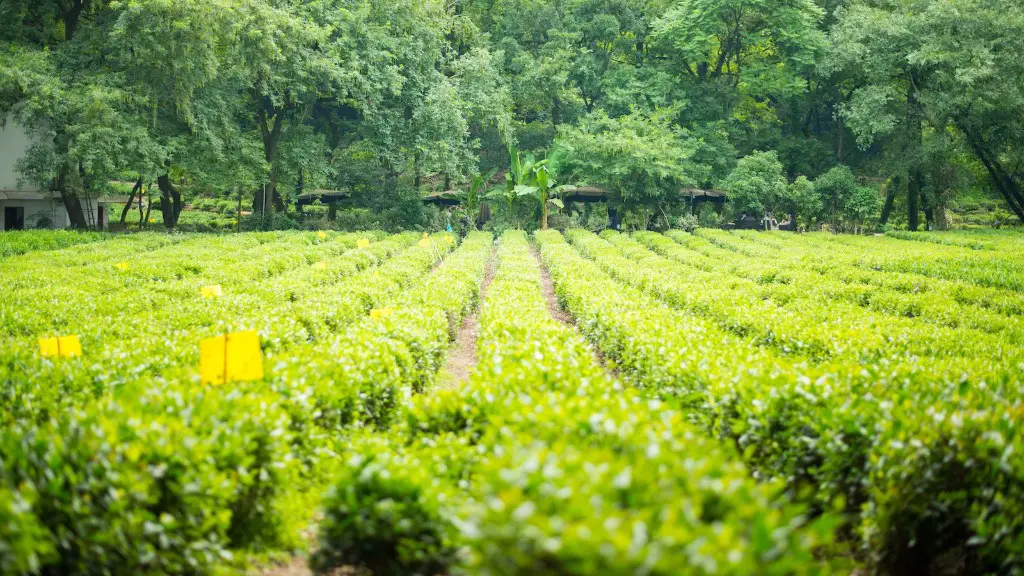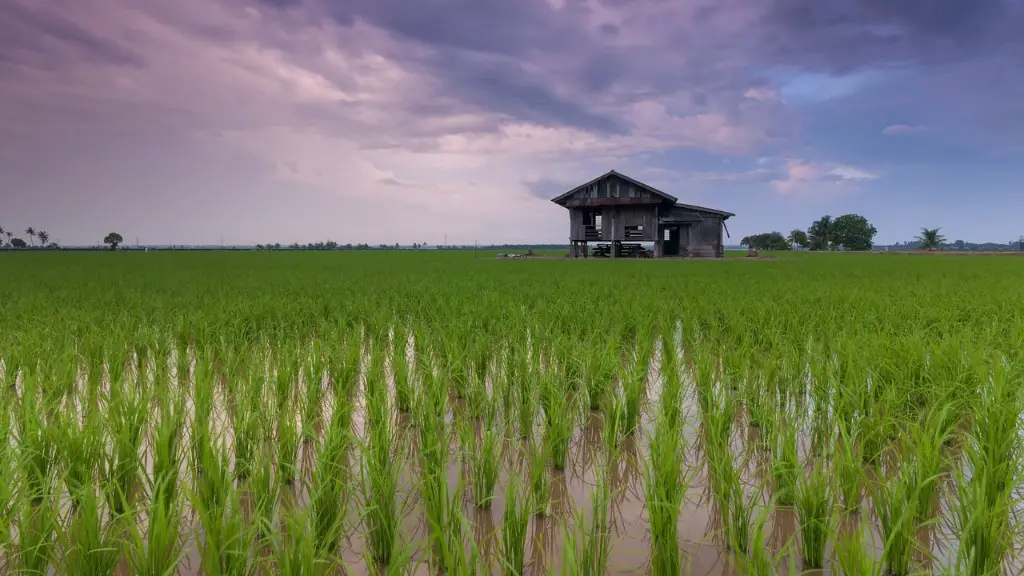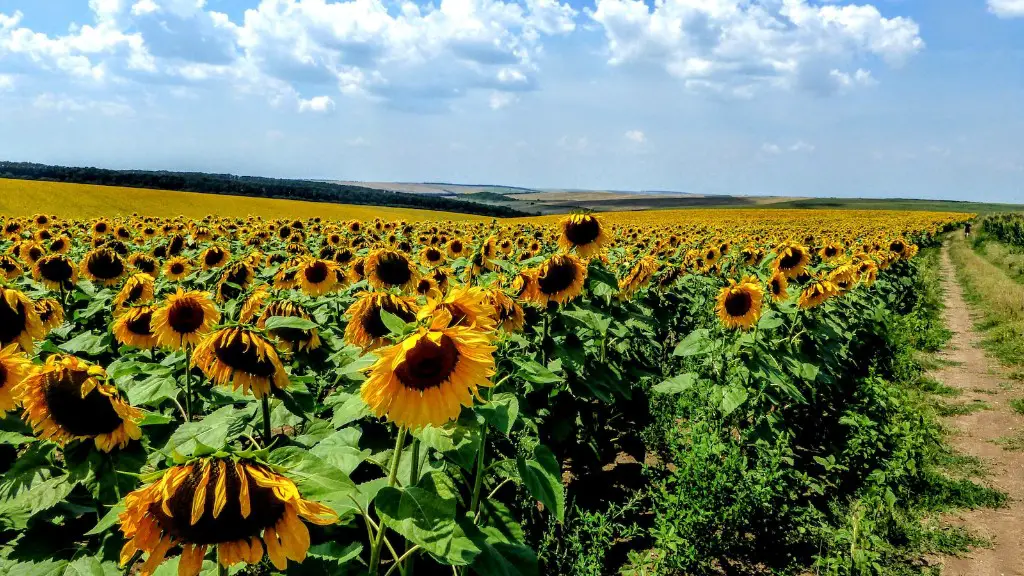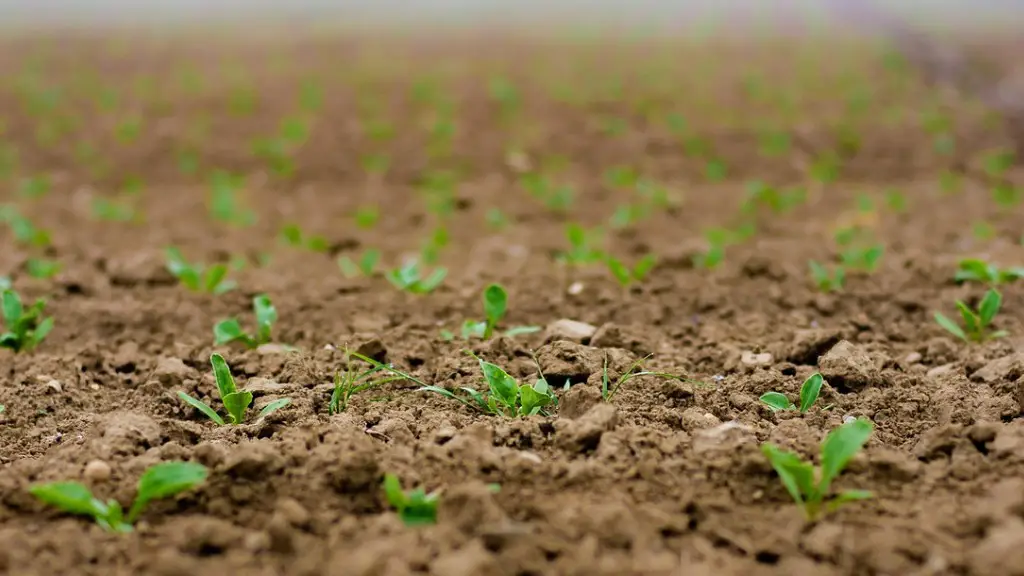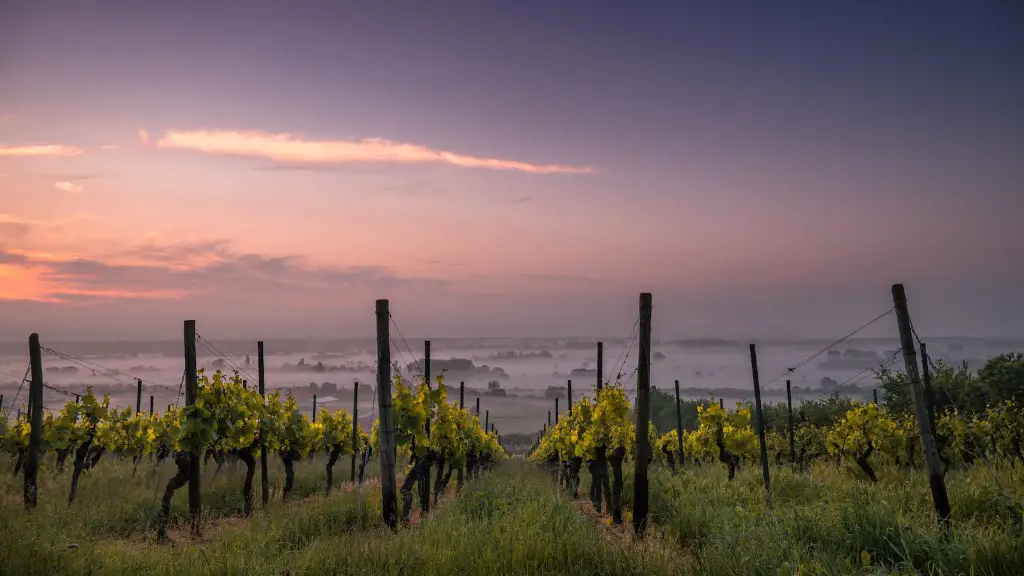Soil characteristics play an important role in agricultural production. The most important characteristics for agriculture are soil texture, porosity, water holding capacity, cation exchange capacity, and pH. Soil texture refers to the size of the particles that make up the soil. The most important factor for determining soil texture is the percentage of sand, silt, and clay in the soil. Porosity is the amount of space between soil particles and is important for drainage and aeration. Water holding capacity is the amount of water that the soil can hold and is determined by the porosity of the soil. Cation exchange capacity is the ability of the soil to hold and exchange cations and is determined by the type and amount of clay and organic matter in the soil. pH is a measure of the acidity or alkalinity of the soil and is important for plant growth.
Soil characteristics that are most beneficial for agriculture include high levels of organic matter, good drainage, and a moderate pH.
What characteristics are needed for the soil to be the best for agriculture?
Healthy, high-quality soil is important for successful crop production. Good soil tilth, sufficient depth, and good drainage are essential. A small population of plant pathogens and insect pests is also desirable. A large population of beneficial organisms is necessary to keep the weed pressure low and to prevent the build-up of chemicals or toxins that may harm the crop.
Loam soil is considered as the best soil for agricultural purpose. The reason that loam soil is suitable for growing plants is because its texture has a combination of soil particles. The soil particles are sandy loams, silty loams, loamy sand and clay loams. This combination of soil particles makes loam soil ideal for plant growth as it has good drainage and is able to retain moisture and nutrients.
What is the most beneficial soil type
Loamy soils are the most fertile of soil types. They are a combination of sandy, clay and silt particles. The clay and silt particles improve moisture retention while the sand minimizes compaction and improves drainage. Loamy soils don’t get dried out in the summer, but also don’t get water-logged in winter.
Soil texture and structure are two very important properties that affect the way soils feel and how they are cultivated. Soil texture is affected by the main components of soil, which are sand, silt, clay particles, and organic matter. The way these components interact with each other affects the overall texture of the soil. Soil structure, on the other hand, is the way the different particles of soil are arranged. This affects the way water and air move through the soil, as well as the overall strength and stability of the soil.
What is the most important characteristic of agriculture?
Agriculture is a land-based activity that involves the production of food, feed, fibre and other goods. It is a crucial sector of the economy, providing employment for a large percentage of the population and contributing to the GDP of many countries. Agriculture has a number of specific characteristics that make it unique, including the land use function, the supply and demand characteristics, the contribution of the agricultural sector to the provision of positive externalities and public goods, food as a unique and most essential good, and agriculture as a key sector of the economy.
Loam soils are a type of soil that is made up of a mixture of sand, silt, and clay. These soils are known for being very fertile and able to retain moisture and nutrients well. Loam soils are an ideal growing medium for most plants.
Which soil horizon is best for agriculture?
A healthy O horizon is crucial for maintaining a productive soil. This layer helps to hold in essential nutrients, improving water retention and providing food for beneficial microorganisms. In addition, the organic matter in this layer helps to improve aeration and drainage.
Loam soil is a rich, chunky type of soil that is a mix of clay, sand, and silt. This soil type is ideal for growing plants and crops because it is easy to work with, drains well, and is packed with nutrients. If you are looking to plant a garden or farm, consider using loam soil as your base!
What are the beneficial elements of soil
Aluminum, cobalt, sodium, selenium, and silicon are all considered beneficial elements for plants. They can promote plant growth and may be essential for particular taxa.
There are three basic soil types: sand, silt, and clay. Sand is comprised of tiny rock fragments and is the roughest in texture. Clay becomes sticky or greasy when wet, and very hard when dry. Silt is between sand and clay in texture.
What is the importance of soil properties in agriculture?
The physical properties of the soil are indeed very important for agricultural production and the sustainable use of soil. The amount and rate of water, oxygen, and nutrient absorption by plants do depend on the ability of the roots to absorb the soil solution as well as the ability of the soil to supply it to the roots.
Alluvial soil gives the best yield in terms of both quality and quantity. The main reason for this is the high fertility of alluvial soil. This is because alluvial soil is rich in organic matter and minerals. Alluvial soil is also well-drained, which further enhances its fertility.
What are the four most important traits for agriculture
A successful career in agriculture requires a versatile skill set. Communication, organisation, and technology literacy are essential key skills. This foundation will allow you to pursue whichever aspect of agricultural work you are interested in.
A good farmer must have a passion for farming, and must be a problem solver. They must be able to work as part of a team, and persevere even when things get tough. Patience and emotional resilience are also key characteristics for a successful farmer.
Which are the most important characteristics of sustainable agriculture?
There is a growing recognition of the need for sustainable agriculture practices that protect and restore the natural environment while producing food, fuel, and fiber. These practices include Rotating crops and embracing diversity, Planting cover crops and perennials, Reducing or eliminating tillage, Applying integrated pest management (IPM), Integrating livestock and crops, Adopting agroforestry practices, and Managing whole systems and landscapes.
Loamy soil is ideal for most garden plants because it holds plenty of moisture but also drains well so that sufficient air can reach the roots. Many gardeners complain of their garden soil being compacted and/or poorly drained. Adding organic matter to the soil can help improve its structure and improve drainage.
Is clay soil good for agriculture
Clayey soil is rich in humus and very fertile, so it is suitable for growing cereals like wheat and gram. Such soil is good at retaining water, which makes it ideal for crops that need a lot of moisture.
Clay loams are a type of soil that is rich in plant nutrients and supports most types of plants and crops. Clay loams can be improved to create better drainage without too much difficulty. In some wet weather or climates, the drainage problems may be harder to overcome.
Final Words
There are many factors to consider when it comes to the soil and agriculture. The most important characteristics of the soil for agriculture are fertility, porosity, drainage, and depth.
There are many soil characteristics that can be beneficial for agriculture, but some of the most important ones are the fertility of the soil, the ability of the soil to retain water, and the level of drainage of the soil.
